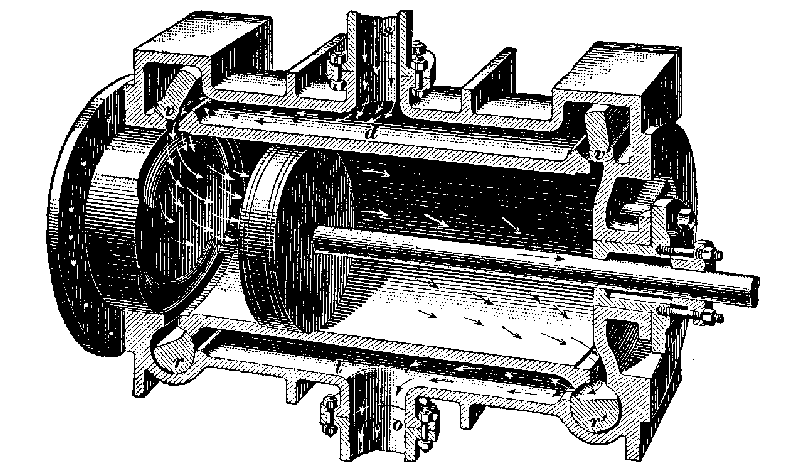
The Corliss valve is an American designed semi rotary valve which can be opened and closed very quickly and allows steam into the cylinder without significant pressure drop (which leads to the steam cooling, with a consequent loss of power and efficiency) Another advantage is that cold exhaust steam does not exit through the inlet valve which would cool the valve and further reduce efficiency.
Steam enters through the vertical pipe (s) at the top into the steam chest (d) the upper valves (v) are the steam inlet valves and are partly rotated to uncover the ports and admit steam alternately into either end of the cylinder
The lower valves (r) are the exhaust and are rocked in the same way to uncover the ports and let steam of of each end of the cylinder in turn.
As shown steam is being admitted at the left end of the cylinder, the piston is moving to the right and the lower right exhaust valve is opening allowing exhaust steam out through the exhaust pipe (o).
Generally the inlet valves were operated through some releasing, liberating or trip mechanism which controls the point at which the valves are shut, many engines had the speed governed by this method and there were a large number of designs for releasing mechanisms, often an engine manufacturer would have their own Patented form which was used solely on their engines.
The exhaust valves were mostly rocked open and closed with no requirement for trip gear.
